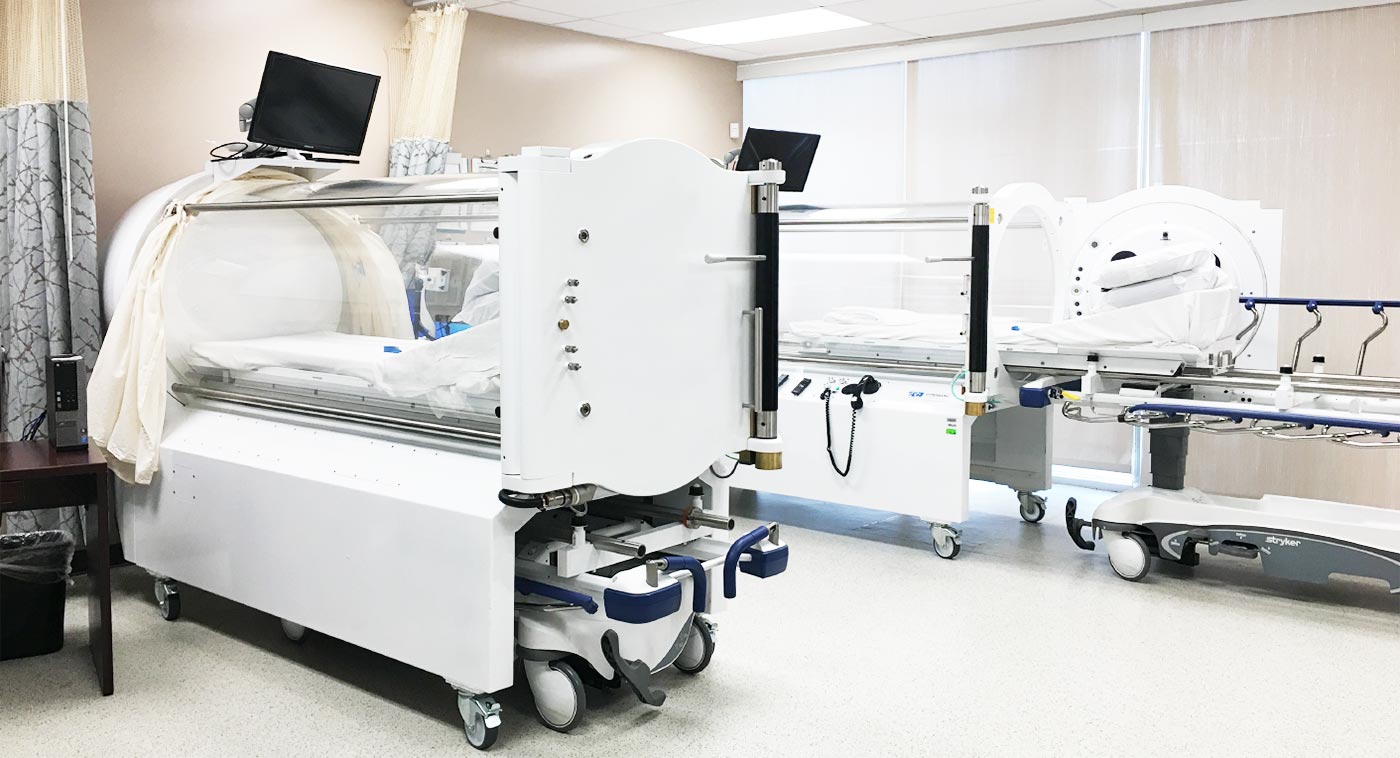Hyperbaric Medicine is the medical specialty that utilizes hyperbaric oxygen for the medical treatment of specified indicated conditions.
Hyperbaric oxygen therapy is the administration of 100% oxygen inhaled at pressure greater than sea level atmospheric pressure. The administration of 100% oxygen at 2.0 – 2.8 ATA evokes specific mechanisms of action in the body that then induce beneficial and healing results.
Hyperbaric oxygen treatments can be given on elective, urgent, or emergent basis depending upon the condition. Different conditions may require different doses of oxygen. The hyperbaric oxygen (HBO2) is either the primary treatment modality to resolve a specific problem or is an adjunctive treatment in a multispecialty approach for a refractory or severe condition. In order to have therapeutic effect, the 100% oxygen must be inhaled and must be delivered at high pressure of at least 1.4 ATA. Topical oxygen — such as by inserting a foot into an inflatable device or incubator — is not hyperbaric oxygen.

Each patient receives a planned course of therapy that is specific to his or her condition. A routine HBO2 treatment will last for 104 minutes to 150 minutes. An urgent or emergent condition, such as decompression sickness, may require a longer HBO2 treatment protocol. Depending upon the medical condition, 20 to 40 HBO2 treatment sessions may be necessary for routine indications, and typically 1 to 20 HBO2 treatment sessions for urgent or emergent indications.